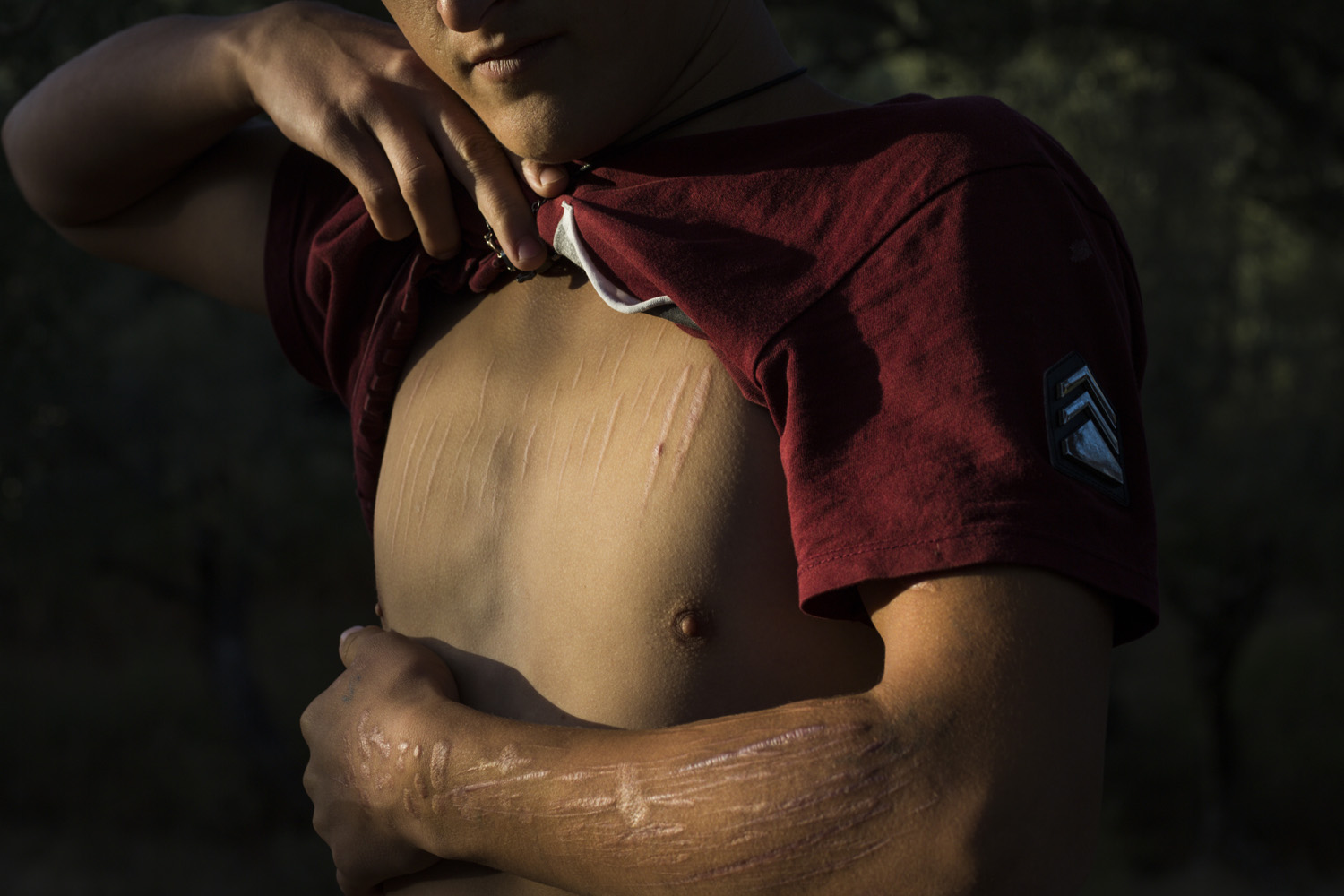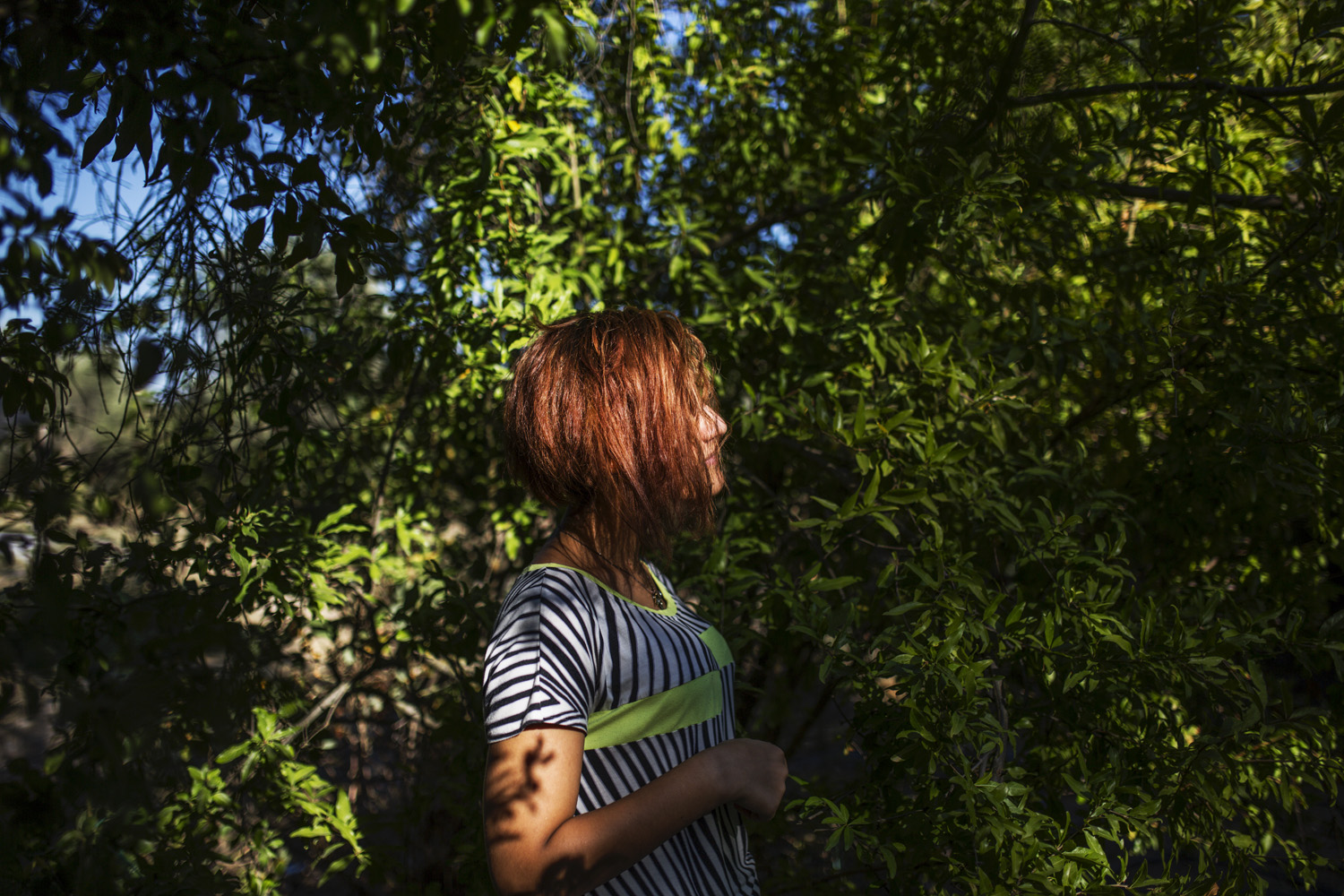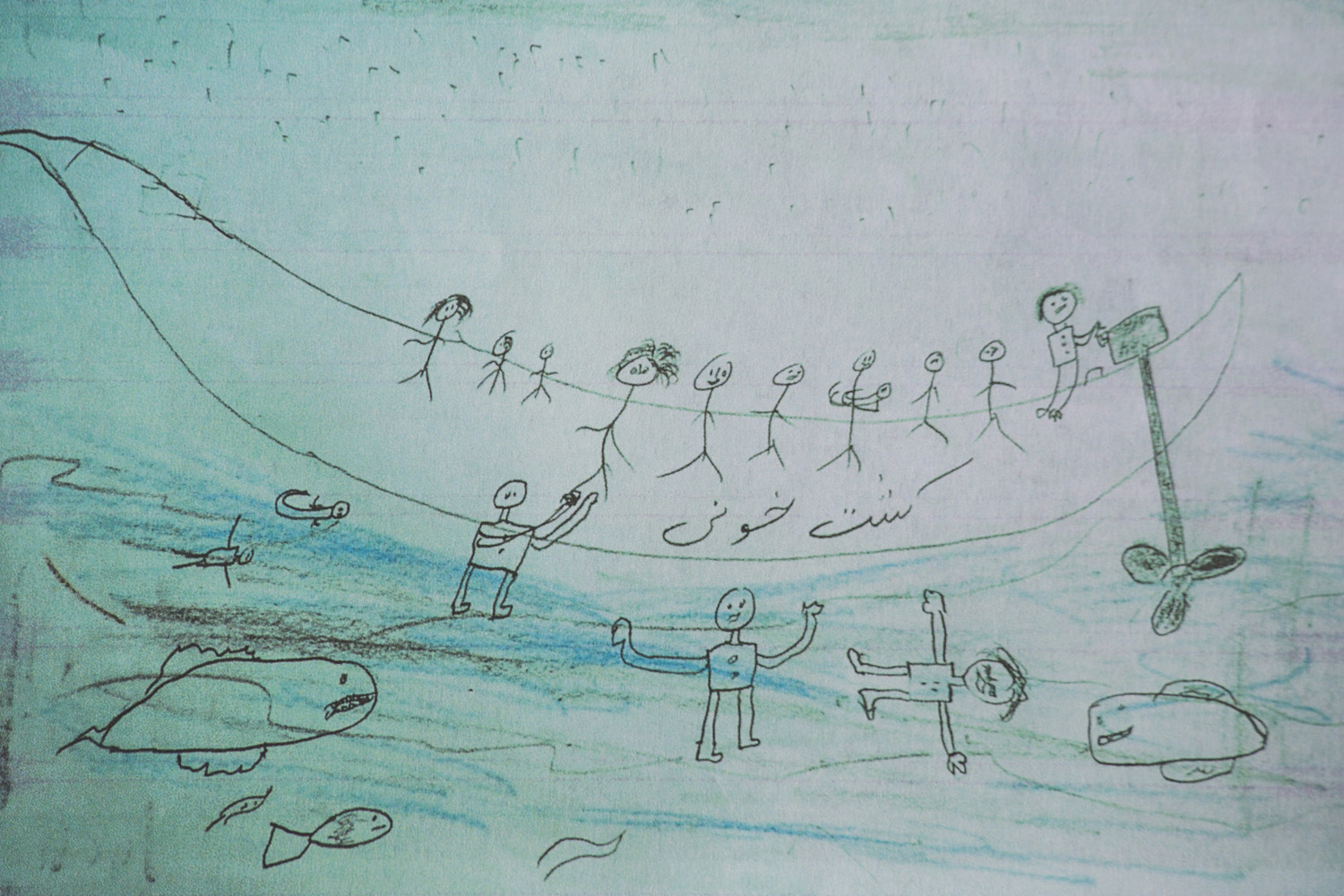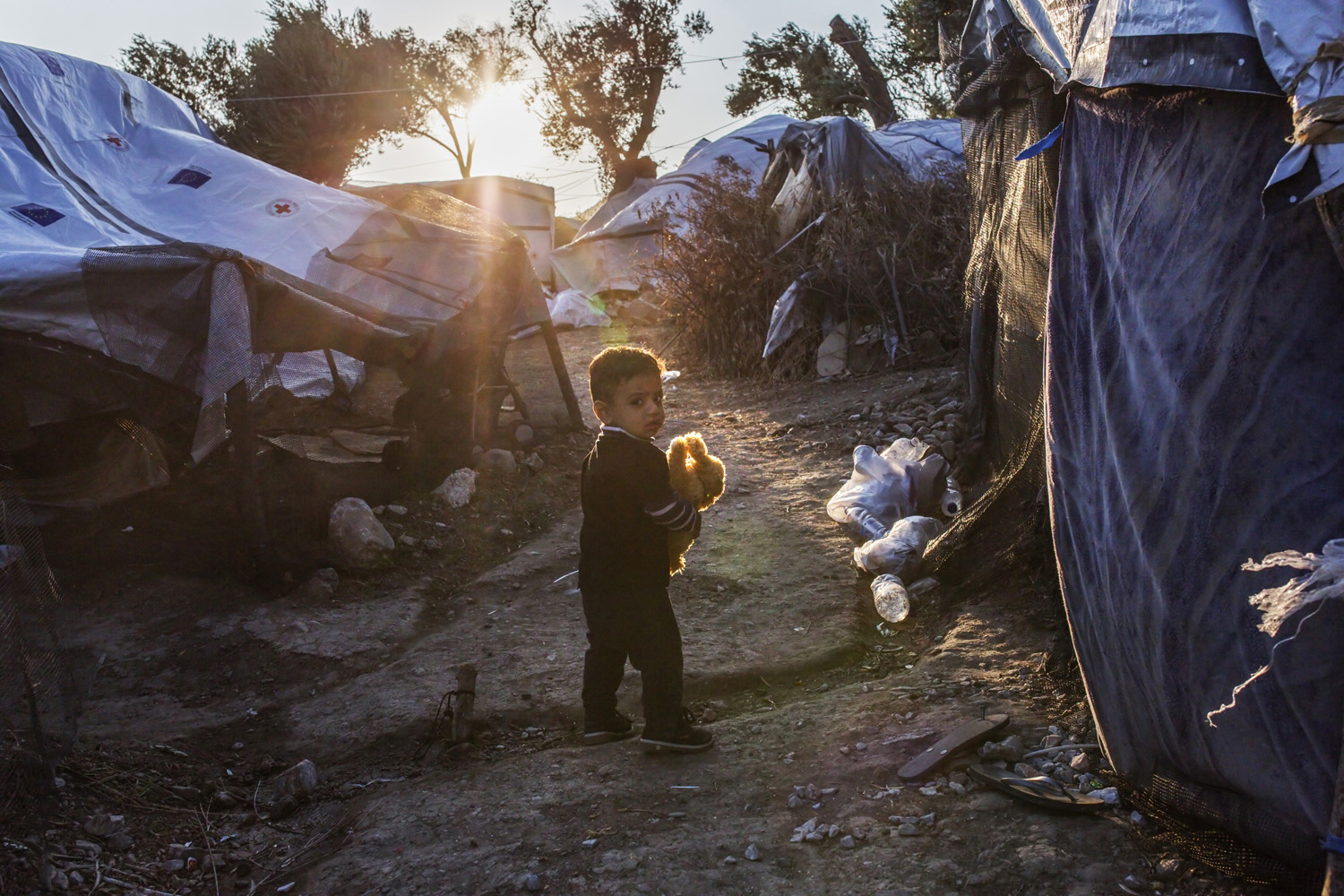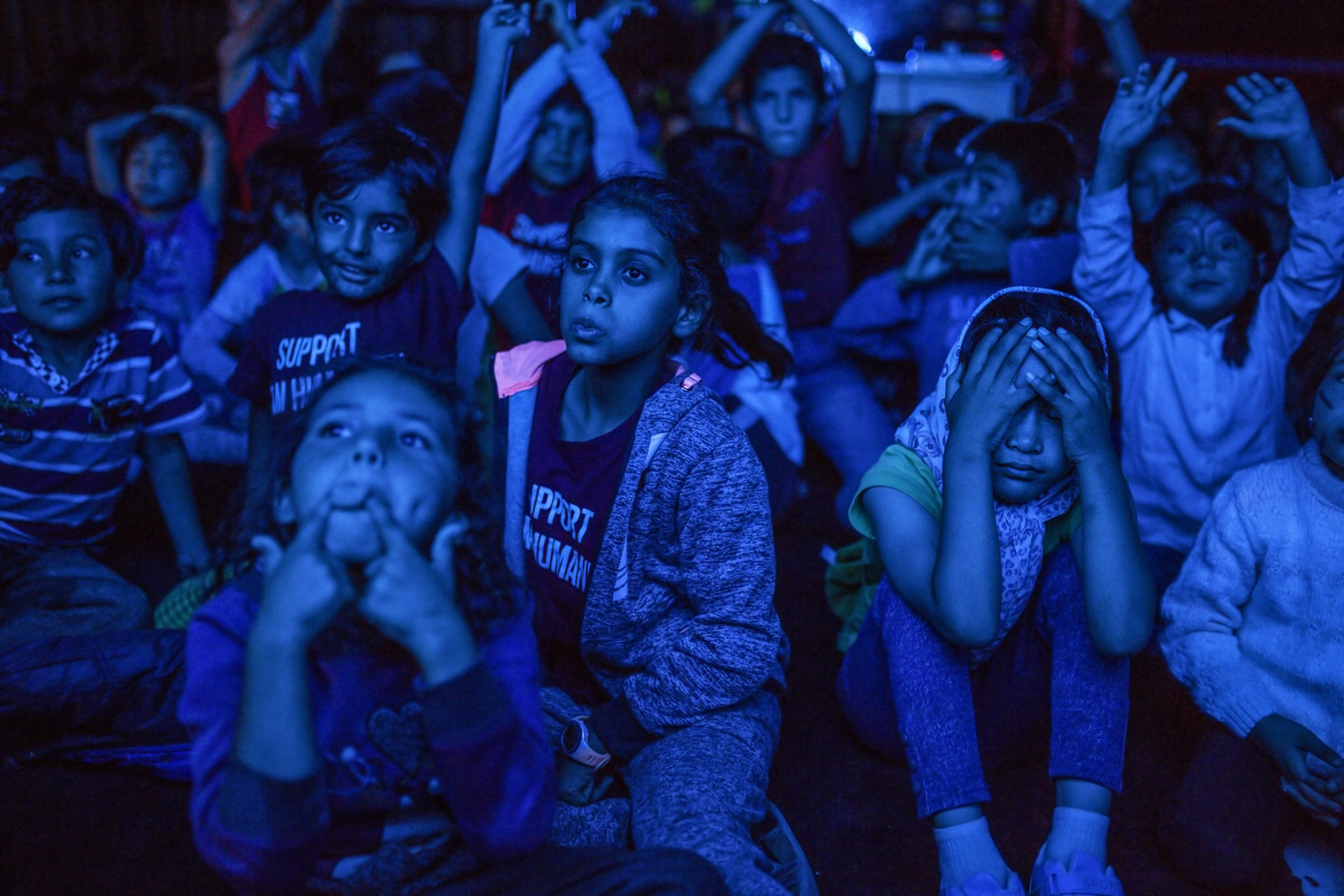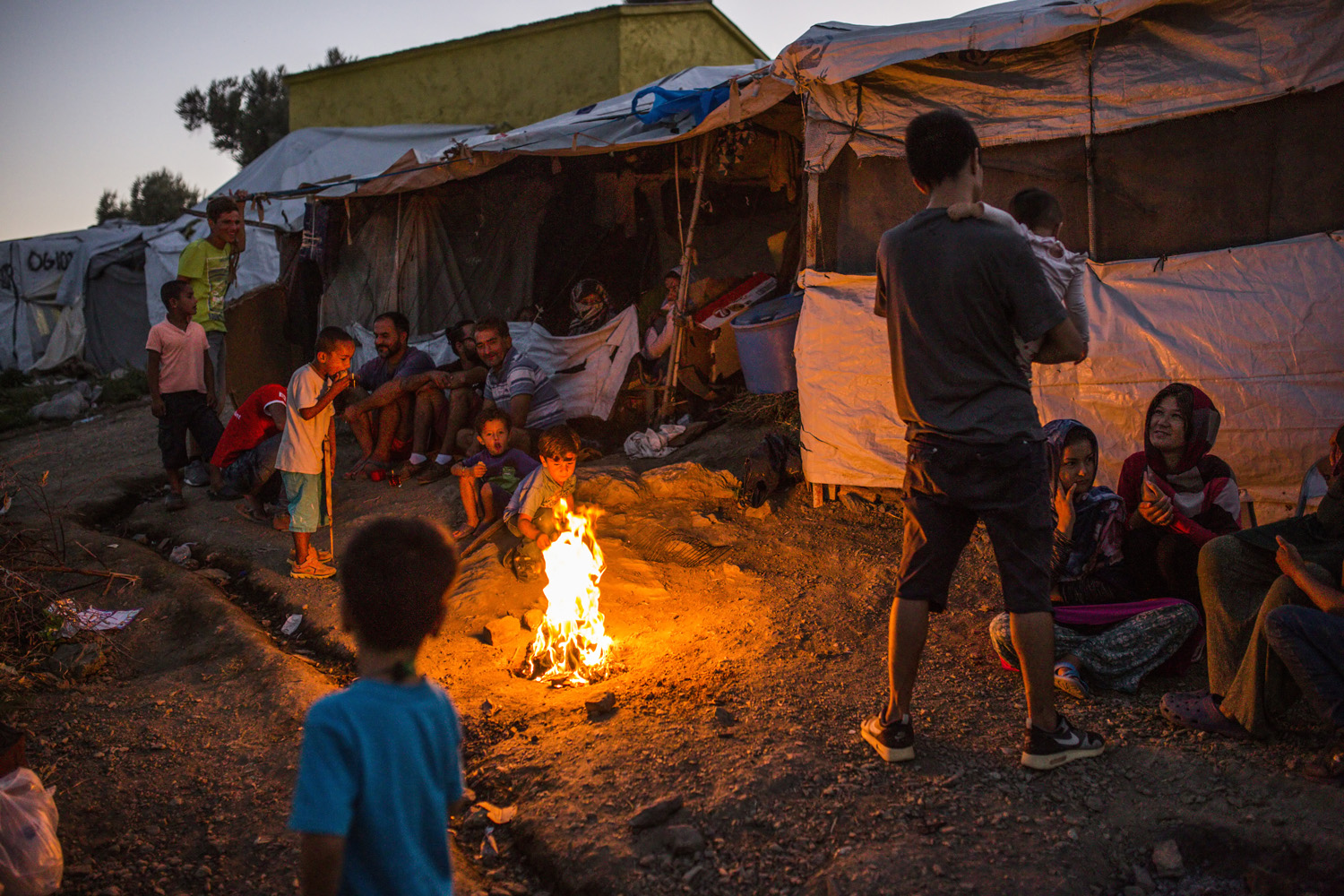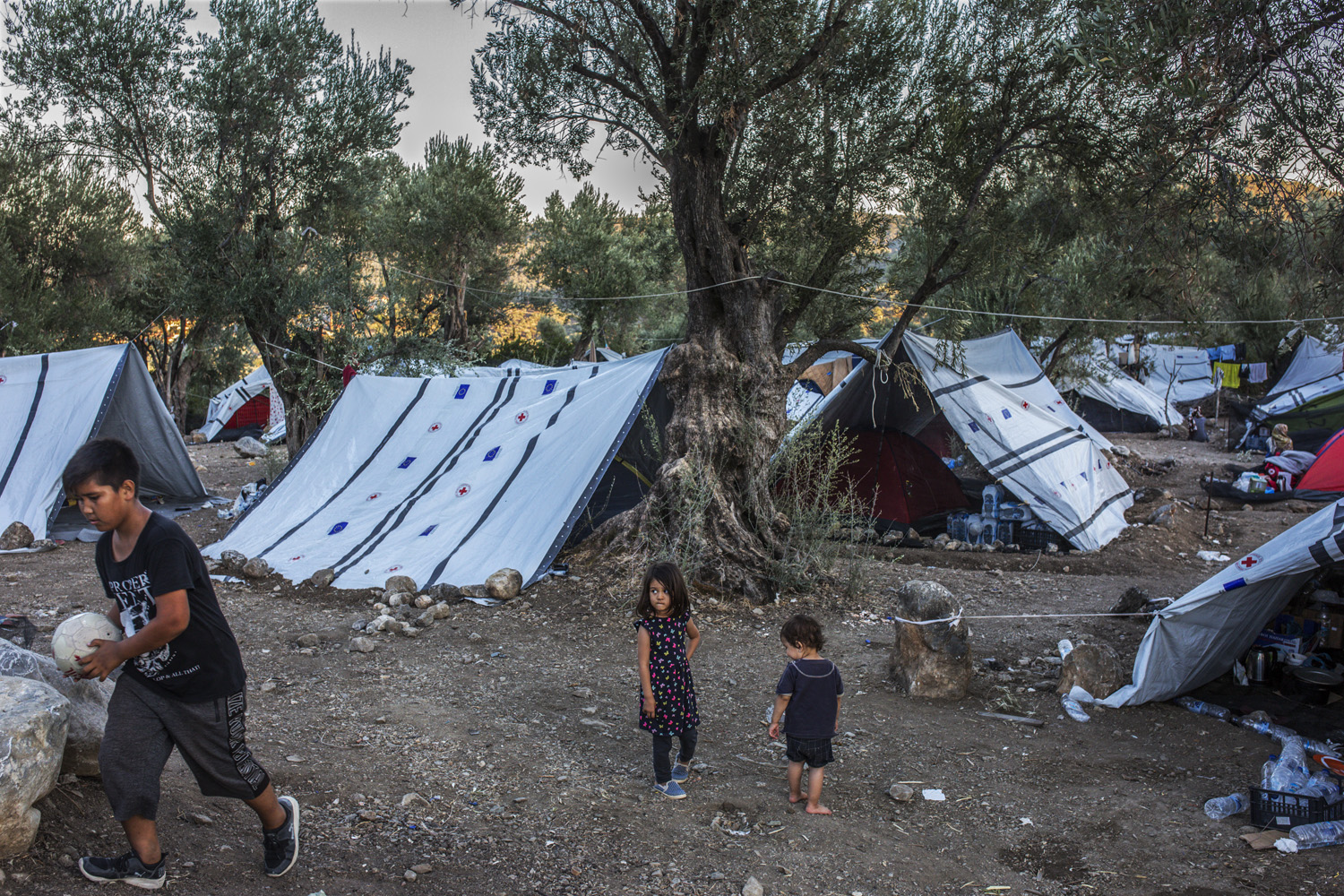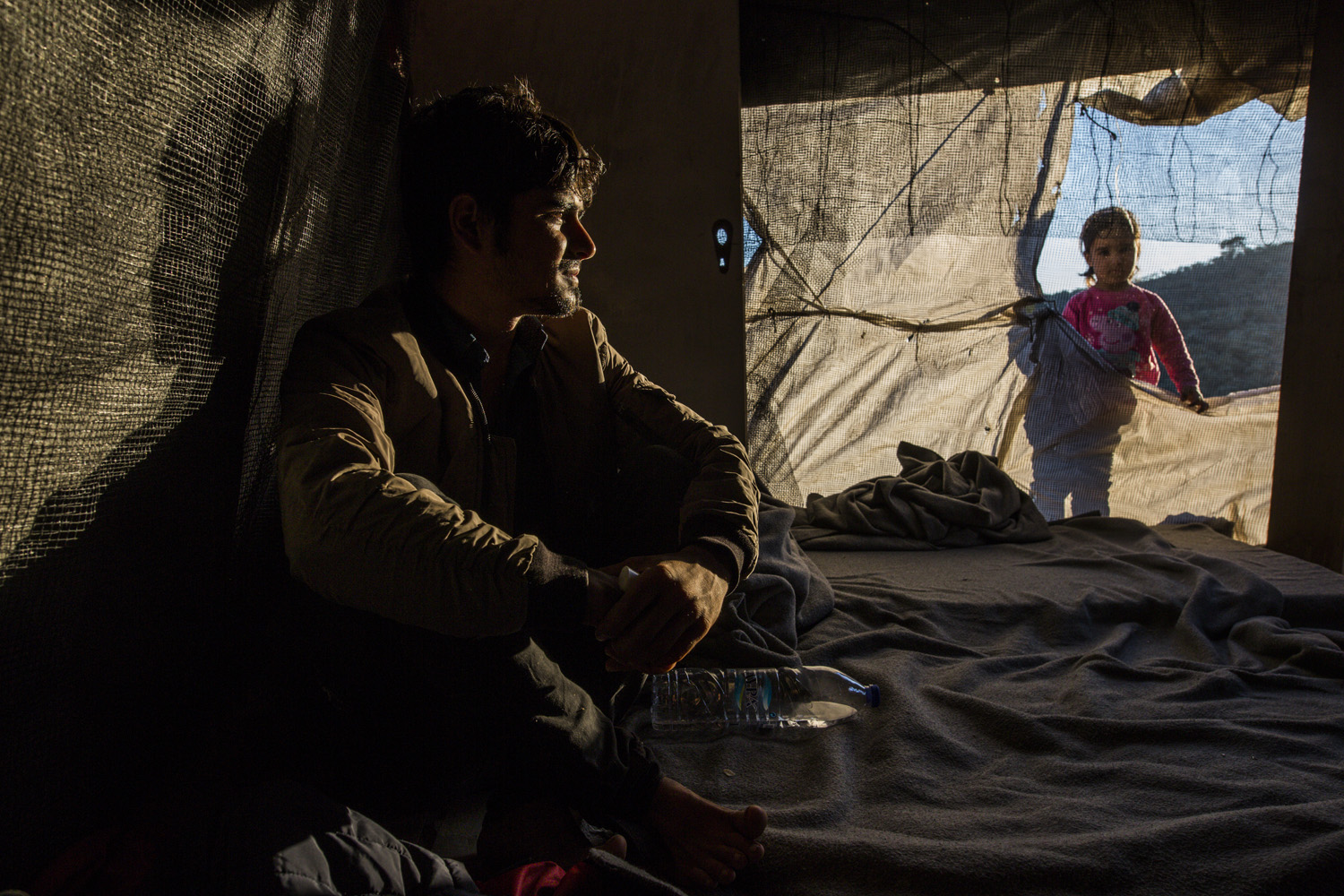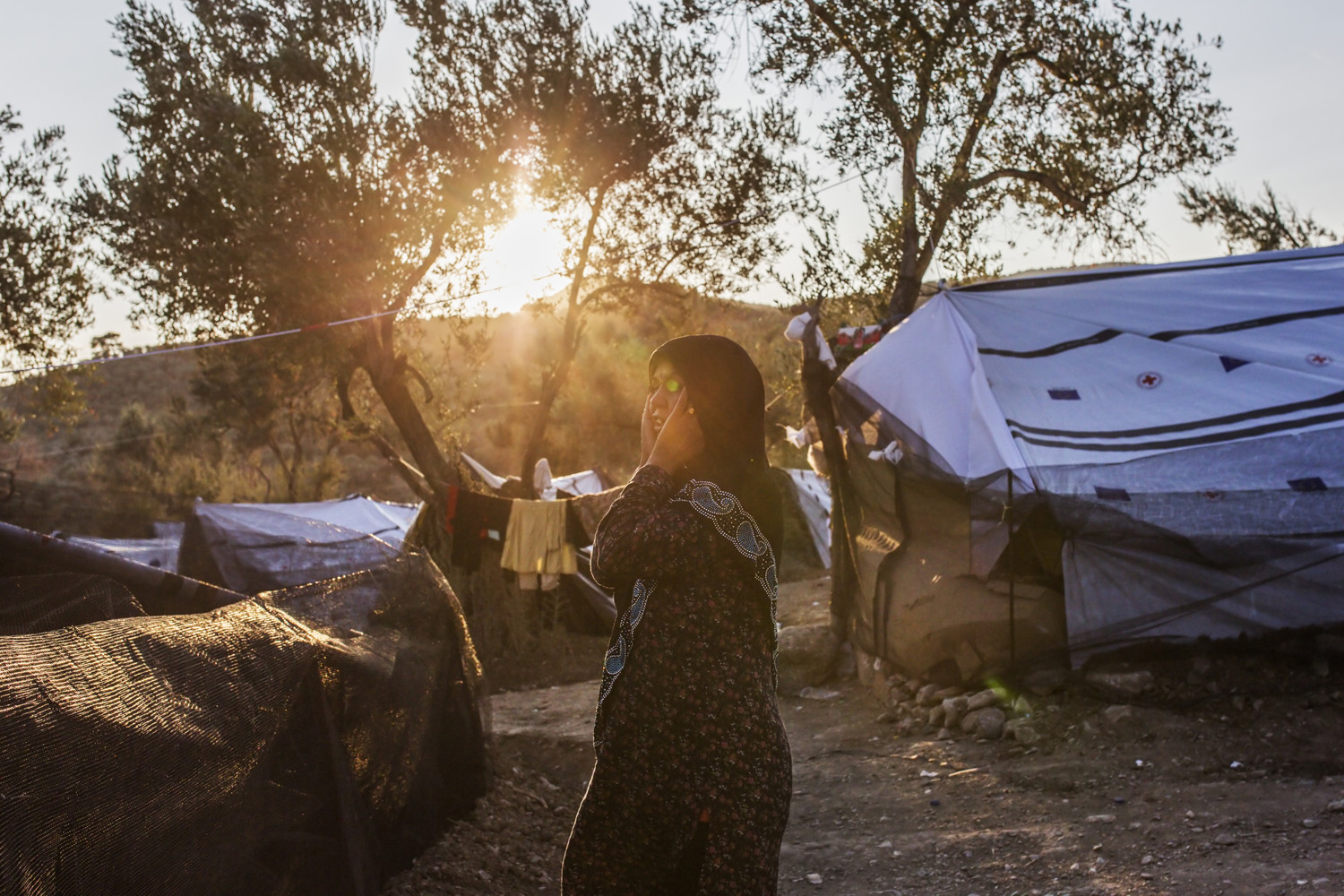Children's Hell. Suicide in Lesbos
Assignment for The Guardian, story by Lorenzo Tondo.
The drawings tell of trauma. Stormy seas dotted with terrified faces. Lifeless bodies of children floating among the waves. And planes dropping bombs, down on to homes and on to people. Eyes that weep blood.
The pencil scrawls were made by children who are part of a growing phenomenon in the Moria refugee camp in Lesbos, Greece. All have attempted suicide or serious self-harm since they came to this place like Nadir, 14, who travelled alone to Lesbos, and who cut himself with a glass shard.
Approximately 3,000 minors live in the Moria camp, which Médecins Sans Frontières (MSF) calls a giant open-air “mental asylum” owing to the overcrowding and dire sanitary conditions.
The camp, among hills dotted with olive trees a few kilometers from the island’s capital town of Mytilene, is home to 9,000 asylum seekers living in a centre designed to hold one third of that number. Migrants live in groups of up to 30 people, crammed into tents or metal containers situated just centimeters apart. Rubbish, scattered everywhere, makes the air almost unbreathable.
Most of the refugees come from war-torn countries like Syria, Iraq and Afghanistan. They arrive in dinghies from the Turkish towns of Ayvalik or Canakkale. According to aid agencies, the controversial deal brokered between Brussels and Ankara aimed at stopping the flow of migrants to Europe via Turkey, combined with the refusal on the part of European countries to take in asylum seekers arriving in Greece, have transformed Lesbos into an Alcatraz, leaving people imprisoned on the island with no way out. Inevitably, children pay the highest price.
According to the IRC report, “up to 60% of asylum seekers attending the mental health centre in Moria this year said they had contemplated suicide, and almost 30% had tried to take their own lives’’. Aid groups say they can only deal with the most severe cases and fear that the numbers of suicidal children are much higher.

